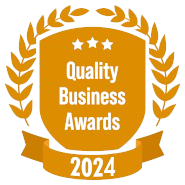Spotting red flags at work can help you identify potential problems early, whether they relate to the workplace culture, job security, or your professional growth.
Here are some common red flags to look out for…
- High Turnover Rates – Frequent departures or a constant cycle of hiring and firing can indicate employee dissatisfaction, poor management, or instability within the company.
- Lack of Transparency – If management consistently keeps employees in the dark about important issues, decisions, or organizational changes, it can signal a lack of trust and respect for the workforce.
- Poor Communication – When communication is consistently unclear, delayed, or non-existent, it can lead to misunderstandings, decreased morale, and a lack of direction for the team.
- Overwork and Unrealistic Expectations – A culture that glorifies overworking, with expectations to work long hours, weekends, or holidays regularly, can lead to burnout and indicates a lack of concern for employee well-being.
- Lack of Professional Development – If there are few opportunities for growth, learning, or advancement, or if such opportunities are only available to a select few, it may suggest a dead-end job.
- Toxic Work Environment – Signs of toxicity include widespread gossip, favoritism, discrimination, harassment, and any behavior that makes the workplace feel hostile or unwelcoming.
- Negativity and Low Morale – A general atmosphere of pessimism, lack of enthusiasm, or widespread dissatisfaction among employees can be indicative of deeper issues within the company.
- Micromanagement – Excessive oversight and control over every minor detail of work can indicate a lack of trust in employees’ abilities and can stifle creativity and autonomy.
- Poor Work-Life Balance – If the company culture does not support or respect personal time, or if there is a lack of flexibility to accommodate life outside of work, it can lead to burnout and dissatisfaction.
- Inconsistent Policies and Enforcement – When rules seem to change on a whim or are applied unevenly across the organization, it can create an environment of uncertainty and unfairness.
- Lack of Recognition or Reward – If hard work and achievements are rarely acknowledged or rewarded, it can lead to a lack of motivation and engagement among employees.
- Financial Instability – Signs such as delayed paychecks, cutbacks, or constant talk of budget issues can indicate financial trouble for the company, potentially affecting job security.
- Leadership Issues – Poor leadership, including a lack of vision, inability to make decisions, or consistent negative behavior from managers, can have a detrimental effect on the entire organization.
Recognizing these red flags can help you assess your current situation and decide whether it’s time to address the issues, seek support, or perhaps look for opportunities elsewhere. Trust your instincts and seek out environments that support your well-being and professional growth.







